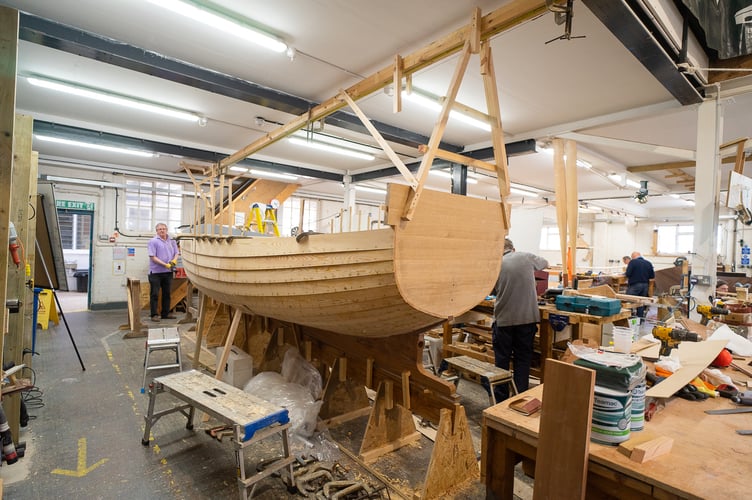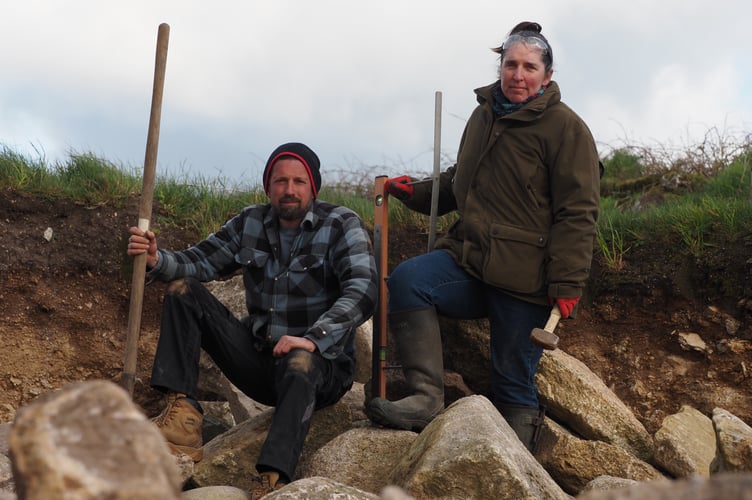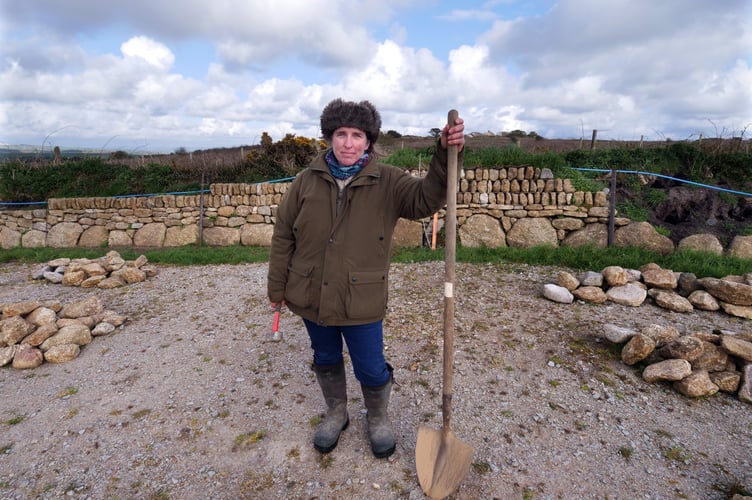Dozens of ancient crafts and skills including plume-making and straw hat-making face extinction in the UK, a new report has found.
Rising energy prices, inflation and the aftermath of the covid pandemic has seen a big increase in the number of traditional crafts that are now threatened.
Cornish hedging, wooden boat building and fair art are among 146 crafts named in this year's 'Red List of Endangered Crafts.'
The list – compiled by the Heritage Crafts – includes 17 news crafts added including silk ribbon making and chain making since the last report in 2021.
After researching 259 trades in the UK, the list breaks them down into 'endangered,' critically endangered,' and 'extinct' categories.
Five new crafts were this year added to the 'critically endangered' list.
These includes chain-making, encaustic tile making, plume-making, silk ribbon making and straw hat making.
However just one craft – mouth-blown flat glass – became entirely extinct since the last report.
According to Heritage Crafts, whose research is funded by the Pilgrim Trust, the energy crisis, inflation and changing demographics have stopped traditional trades being passed on.

However, in a rare glimmer of good news, some previously endangered crafts including shinty stick making and brilliant cutting (hand cutting glass) have been revived.
New value in homemade items and work to support small businesses in the pandemic have contributed to saving crafts like these.
Heritage Crafts was able to distribute 57 grants of up to £2,000 each as part of its Endangered Crafts Fund to help preserve ancient crafts.
Mary Lewis, who led the research on behalf of Heritage Crafts, said: “The effect of the energy crisis, inflation, covid-19 and Brexit have been tough on everyone, not least the craftspeople who possess our most fundamental craft skills.
"We know that heritage craft skills operate like an ecosystem; if we lose one part it can have devastating consequences on other parts of the system.
"If we allow endangered crafts to disappear then we seriously diminish the opportunities for future generations to create their own sustainable and fulfilling livelihoods and deal with the challenges of the future.”

The battle to save some crafts is often taken on by women in what were traditionally male-led trades.
Those fighting for the survival of Cornish hedging include Helen Bowkett, 51, the only female hedger in the Guild of Cornish Hedgers.
She has taken the baton to train a new generation in the unique and eco-friendly skill.
The hedging grainer from Penwith, Cornwall, said: "The Guild was formed in 2002 because the skill was being lost.
"Farmers are under too much pressure now to pass it on from farmer to son.
"Children aren't staying in farming so the generational skill is being lost.
"I hedged with my dad when I was young.
"My favourite memories are of mending hedging with him at age seven, passing him the wrong stones."
The landscape gardener learnt to create the five-by-five-foot hedging from banks that are up to 5,000 years old in the region.
She trained as a hedger 10 years ago, spending a year getting her qualification from the Guild.
The hedger collects stones from a cleared field and uses the excess soil to build a ridge which is compacted in by tiered stones on either side.
The hedge is then topped with an attractive domed turf.
For this reason, the hedges host a seedbank from plants found when the structure was originally built, in some cases thousands of years ago.
The hedges also play a role in making a home for wildlife, whilst staying steady for centuries and contributing to the unique scenery of the Cornish landscape.
However there are now just 13 working craftsmen left practising this craft in the Guild.
For this reason, Helen has given up building to teach budding hedgers full-time to try and save the dying skill.
She said: "There were only 13 of us at the AGM in February. That's the worry.
"I'm the only woman to complete the 10-day course we run. We need to teach in a way that retains women."
Helen is now designing and teaching courses to attract women with shorter taster sessions.
Her concern is without more hedgers, the quality and upkeep of the Cornish landscape will decline.
The married mum of three said: "Cornish hedges are the only man-made structure still in use for its original purpose today.
"It's a way of building a boundary using the stone from the original field. It becomes an incredible habitat for biodiversity.
"They become part of a network of hedges that are like motorways for small wildlife from insects, lizards, lichens, mosses, gorse, butterflies and bees."

Amy Stringfellow, 33, has worked as a boat builder since she was 21.
Her contribution to the trade of traditional wooden boat building and restoration is also to recruit more women, which she says is the key to the continuation of the craft.
Amy, from Falmouth, Cornwall, said: "For a long time I was the only female boat builder around. I remember so clearly feeling quite isolated.
"I now work as a mentor to set up diversity strategies for boatyards to encourage better work environments for everyone.
"Another issue is a lack of people studying STEM subjects across the board- it's a real economic problem.
"Boatbuilding has a particular economic value for the Cornish coastline.
"Britain is a tiny island dictated by water and there are hundreds of off-shooting transferable skills people can move into from boatbuilding."
Collaborating with Heritage Crafts on with a survey of 150 boatbuilders and apprentices, Amy found wooden boat building 'by eye' to be the most dwindling skill.
Though Amy specialises in wooden boats and restoration, she has to work on all types of boats and repairs including fibreglass.
She explains: "Nowadays you have to be multifaceted.
"It's very rare that you have someone who is exclusively a traditional shipwright, only a handful of people do it and have the skill to judge a boat 'by eye'.
"When a master craftsman has been building a boat for a long time the methodology is built in the brain.
"You can set it up without needing dimensions. You can look down the centre of the boat and tell if it's altered because of the weather.
"It's multi-dimensional. Everything can affect wood- it's a live substance."
Back in the 19th century boats were often built on the beach they would be used on, created for the specific needs of the tide and slipway on that one beach.
Amy said: "The key importance of the community and bringing that skill back has been lost along the way and become a dying trade. It's tragic really."
Critically endangered crafts are those at serious risk of no longer being practised.
They are skills that have a shrinking base of craftspeople, limited training opportunities or low financial viability.
The newly-critically endangered crafts listed this year are: Arrowsmithing, bow making (musical), chain making, coppersmithing, encaustic tile making, hat block making, plume making, silk ribbon making, straw hat making, Sussex trug making and whip making.
Endangered crafts are those that have serious concerns for their future viability, including a shrinking market share, an ageing demographic or a declining numbers of practitioners.
The newly-endangered crafts listed this year are: Bicycle frame making, boat building (traditional wooden boats), canal art and barge painting, composition picture frame making, Cornish hedging, fairground art, gauged brickwork, graining and marbling, hand engraving, hand hewing, lacquerwork, marionette making, mechanical organ making, pigment making, sgain dubh making, silk weaving, spar making, stained glass window making (historic) and vardo art and living waggon crafts
The HCA Heritage Crafts Red List of Endangered Crafts 2023 edition is available to view online at http://redlist.heritagecrafts.org.uk.





Comments
This article has no comments yet. Be the first to leave a comment.